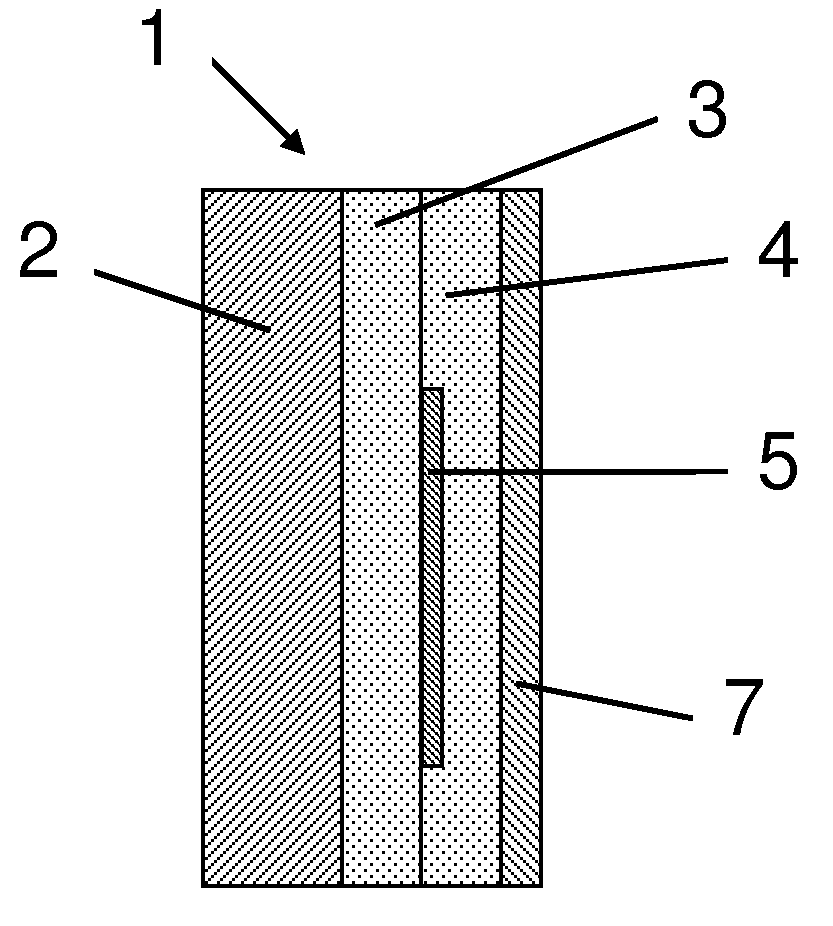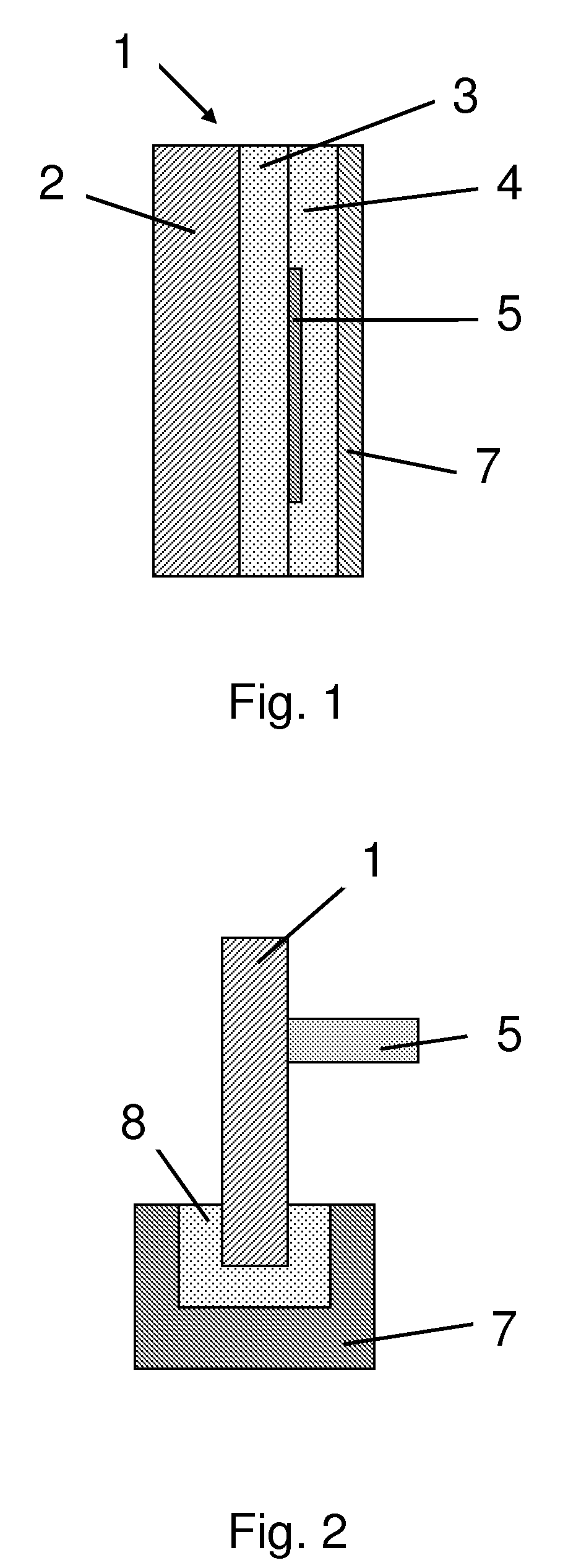Adhesive tape, particularly for bonding optoelectronic components
- Summary
- Abstract
- Description
- Claims
- Application Information
AI Technical Summary
Benefits of technology
Problems solved by technology
Method used
Image
Examples
example 1
Comparative
[0070]An adhesive tape with a PE foam 1000 μm thick (Alveo), with a density of 67 kg / m3, is corona-treated and then provided on both sides with 50 g / m2 of a resin-modified adhesive (tesa 4957) and subjected to measurement.[0071]Permeation of water: 12 g / m2 d[0072]Conductivity measurement: short circuit (resistance
[0073]The adhesive tape does not have a sufficient barrier effect; water is able to diffuse into the joint and short-circuit the conductor (aluminium foil) with the frame.
example 2
Comparative
[0074]An adhesive tape with a PE foam 1000 μm thick, with a density of 67 kg / m3, is corona-treated and then provided on both sides with 50 g / m2 of a resin-modified adhesive (tesa 4957). Furthermore, on the side facing the laminate edge, the adhesive tape is provided with a 23 μm polyester film and with an additional layer of adhesive which is identical to those specified above. The resulting product structure is as follows:[0075]a) adhesive[0076]b) foam[0077]c) adhesive[0078]d) polyester film[0079]e) adhesive
[0080]The adhesive e) is facing the laminate edge.[0081]Permeation of water: 10 g / m2 d[0082]Conductivity measurement: short circuit (resistance
[0083]The adhesive tape does not have a sufficient barrier effect; water is able to diffuse into the joint and short-circuit the conductor (aluminium foil) with the frame.
example 3
Inventive
[0084]An adhesive tape with a 1000 μm thick PE foam having a density of 67 kg / m3 is corona-treated and then provided on both sides with 50 g / m2 of a resin-modified adhesive (tesa 4957). Additionally, on the side facing the laminate edge, a 23 μm polyester film which has been vapour-coated with a layer of aluminium 20 nm thick (Donmore Europe in 79111 Freiburg), and an additional layer of adhesive which is identical with those specified above, are applied. The resulting product structure is as follows:[0085]a) adhesive[0086]b) foam[0087]c) adhesive[0088]d) metallized polyester film[0089]e) adhesive
[0090]The adhesive e) faces the laminate edge.[0091]Permeation of water: 1 g / m2 d[0092]Conductivity measurement: 25 Mohm
[0093]The adhesive tape has a sufficient barrier effect; no water / water vapour is able to diffuse into the joint of the laminate and short-circuit the conductor (aluminium foil) with the frame.
PUM
| Property | Measurement | Unit |
|---|---|---|
| Temperature | aaaaa | aaaaa |
| Fraction | aaaaa | aaaaa |
| Thickness | aaaaa | aaaaa |
Abstract
Description
Claims
Application Information
 Login to View More
Login to View More - R&D
- Intellectual Property
- Life Sciences
- Materials
- Tech Scout
- Unparalleled Data Quality
- Higher Quality Content
- 60% Fewer Hallucinations
Browse by: Latest US Patents, China's latest patents, Technical Efficacy Thesaurus, Application Domain, Technology Topic, Popular Technical Reports.
© 2025 PatSnap. All rights reserved.Legal|Privacy policy|Modern Slavery Act Transparency Statement|Sitemap|About US| Contact US: help@patsnap.com



